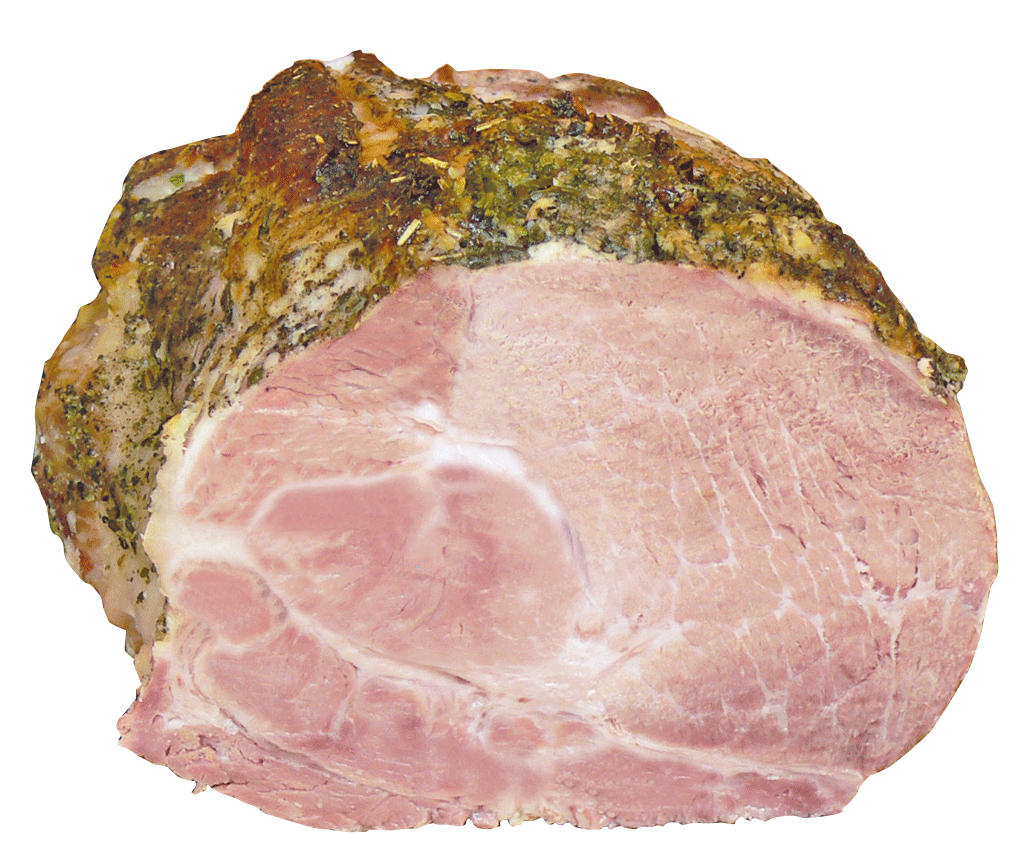
This image has format transparent PNG with resolution 1024x859.
You can download this image in best resolution from this page and use it for design and web design.
pork meat PNG with transparent background you can download for free, just click on download button.
Pork is the culinary name for the flesh of a domestic pig (Sus scrofa domesticus). It is the most commonly consumed meat worldwide, with evidence of pig husbandry dating back to 5000 BC.
Pork is eaten both freshly cooked and preserved. Curing extends the shelf life of the pork products. Ham, smoked pork, gammon, bacon and sausage are examples of preserved pork. Charcuterie is the branch of cooking devoted to prepared meat products, many from pork.
Pig is the most popular meat in the Eastern and non-Muslim parts of Southeastern Asia (Indochina, Philippines, Singapore, East Timor), and is also very common in the Western world, especially in Central Europe. It is highly prized in Asian cuisines for its fat content and pleasant texture. Consumption of pork is forbidden by Jewish, Muslim, and Rastafarian dietary law, for religious reasons, with several suggested possible causes.
Charcuterie is the branch of cooking devoted to prepared meat products such as bacon, ham, sausage, terrines, galantines, pâtés, and confit, primarily from pig. Originally intended as a way to preserve meats before the advent of refrigeration, these preparations are prepared today for the flavors that are derived from the preservation processes. In 15th-century France, local guilds regulated tradesmen in the food production industry in each city. The guilds that produced charcuterie were those of the charcutiers. The members of this guild produced a traditional range of cooked or salted and dried meats, which varied, sometimes distinctively, from region to region. The only "raw" meat the charcutiers were allowed to sell was unrendered lard. The charcutier prepared numerous items, including pâtés, rillettes, sausages, bacon, trotters, and head cheese.
Before the mass production and re-engineering of pigs in the 20th century, pork in Europe and North America was traditionally an autumn dish—pigs and other livestock coming to the slaughter in the autumn after growing in the spring and fattening during the summer. Due to the seasonal nature of the meat in Western culinary history, apples (harvested in late summer and autumn) have been a staple pairing to fresh pork. The year-round availability of meat and fruits has not diminished the popularity of this combination on Western plates.
Pork is popular throughout eastern Asia and the Pacific, where whole roast pig is a popular item in Pacific Island cuisine. It is consumed in a great many ways and highly esteemed in Chinese cuisine. Currently China is the world's largest pork consumer, with pork consumption expected to total 53 million tons in 2012, which accounts for more than half of global pork consumption. In China, pork is preferred over beef for economic and aesthetic reasons; the pig is easy to feed and is not used for labour. Domestic pigs also feed on human waste, thus reducing cost of feeding and helping in recycling. The colours of the meat and the fat of pork are regarded as more appetizing, while the taste and smell are described as sweeter and cleaner. It is also considered easier to digest. In rural tradition, pork is shared to celebrate important occasions and to form bonding. In China, pork is so important that the nation maintains a "strategic pork reserve". Red braised pork (hong shao rou), a delicacy from Hunan Province, inspired Mao Zedong. Other popular Chinese pork dishes are sweet and sour pork, bakkwa, and charsiu. In the Philippines, due to 300 years of Spanish colonization and influence, lechon, which is an entire roasted suckling pig, is the national delicacy.
Pork is particularly common as an ingredient in sausages. Many traditional European sausages are made with pork, including chorizo, fuet, Cumberland sausage and salami. Many brands of American hot dogs and most breakfast sausages are made from pork. Processing of pork into sausages and other products in France is described as charcuterie.
Ham and bacon are made from fresh pork by curing with salt (pickling) or smoking. Shoulders and legs are most commonly cured in this manner for Picnic shoulder and ham, whereas streaky and round bacon come from the side (round from the loin and streaky from the belly).
Its myoglobin content is lower than that of beef, but much higher than that of chicken. The USDA treats pork as a red meat. Pork is very high in thiamin (vitamin B1). Pork with its fat trimmed is leaner than the meat of most domesticated animals, but is high in cholesterol and saturated fat.
In 1987 the U.S. National Pork Board began an advertising campaign to position pork as "the other white meat"—due to a public perception of chicken and turkey (white meat) as healthier than red meat. The campaign was highly successful and resulted in 87% of consumers identifying pork with the slogan. The board retired the slogan on 4 March 2011.
In this page you can download free PNG images: Pork meat PNG images free download